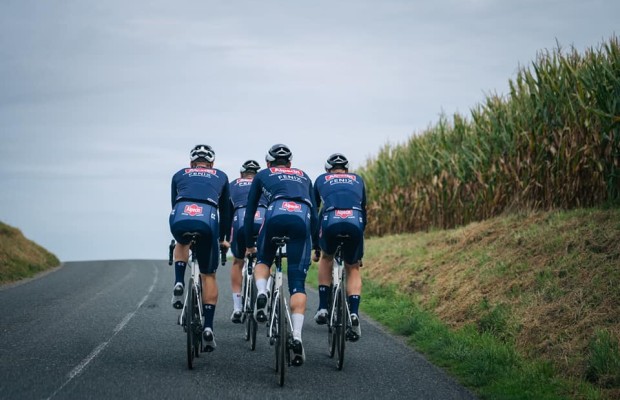How to improve your FTP
For those who train for power, a figure is the true measure, the one that defines your level as a cyclist and is used to compare yourself with others: the Functional Threshold Power or FTP for its acronym in English, the parameter that defines the maximum intensity of our longest efforts. Learn how to improve this data.

Become a better cyclist by increasing your FTP
The Functional Threshold Power is, when we use watts as a reference for training, the most relevant value in relation to our performance and the one that will broadly define our level as cyclists.
Remember that the FTP is defined as the maximum power we can sustain during a constant effort of 60 minutes and, in relation to it, the different power-related work zones are defined. A parameter that we calculate through a field test, in theory, going to its definition a one-hour test where we give it all.
RECOMENDADO

The cyclist's patience: how long, gentle training sessions build your best season

Tips for cycling in the rain

25 cycling gifts ideas to get it right

When do helmets have to be changed? Do they have an expiration date?

Some reasons to stay away from the road in winter

S-Works: what does it really mean and where does Specialized's most exclusive label come from?

However, such a training is terribly demanding for the cyclist so doctors Coogan and Allen, creators of this concept, managed to extrapolate the data from a 20-minute test so that, by multiplying the power obtained in this test by a correction factor, the value of FTP can be calculated very closely.
Let's get to work
The importance of FTP is that it defines the power that we can sustain in prolonged efforts without entering anaerobic territory where we begin to consume glycogen reserves at a rapid pace and performance would drop within a few minutes. With the highest possible FTP, we will be able to maintain a higher pace for a longer period of time.
When working on FTP, the first thing we need to be clear about, as with any other sports qualities, is that we need to have a solid base to build on. In the case of an endurance sport like cycling, these foundations are based on a sufficiently trained aerobic base. It will be impossible to sustain the level of intensity and the cadence of training necessary to improve the FTP without having that base that allows for adequate recovery between sessions and an adequate effort economy.

Assuming that we have that base, there are three methodologies when it comes to working on FTP: training at a slightly lower intensity, slightly higher, or at the same threshold. In any case, we are already talking about high intensities that, in most cases, will require us to break down the effort although, they will be intervals of long duration.
The first method consists of pedaling in the so-called Sweet Spot zone, a level of effort slightly below, approximately between 84 and 97% of FTP, and that we can work in several intervals ranging from 10 to 30 minutes. An example of a workout could be 3x10 minutes at Sweet Spot intensity with 5 minutes of recovery between them or one of the classic workouts like the 2x20 minutes. Workouts to which we can add an extra point of demand if we do them on a climb of that duration that allows us to maintain a constant pace.

When working at the same threshold, a very demanding intensity, it is usually chosen to perform a single repetition of a certain duration. More than enough to generate the desired stimuli. In this case, 30 or 40 minutes at threshold will leave our legs very warm. An ideal workout to do on our favorite climb.
When working above, we will use a similar methodology, breaking down into intervals, with a duration between 5 and 10 minutes. Only slightly above FTP, no more than 105% to avoid entering the anaerobic zone, which would generate other types of adaptations more related to lactate tolerance, a training also necessary but not what we are looking for at the moment.
What is not measured cannot be improved
Although performing a 20-minute test has become the nightmare of practically everyone who trains for power, we will not be able to quantify the effectiveness of the training and our progression if we do not measure. Every month and a half or two months we should perform a test, not only to check the progress we have made but also to adapt the training zones to these new values because, otherwise, our workouts would stop having the desired effect by not being performed at the necessary intensity.
Aside from improving watts in themselves, let's not forget that the FTP is usually referred to in relative values, that is, the famous W/kg. Remember that it is of little use to improve one part of that fraction if we do not improve or worsen the other, besides that, reducing weight is usually much easier than gaining watts, especially when we already have a certain level.

Finally, we remind you that the FTP is not everything in the performance of the cyclist. It is a value that expresses our ability to make long-duration efforts. However, if we participate in competitions or simply want to keep up with the pace in those moments of maximum intensity, we must also enhance our anaerobic capacities by improving, as mentioned before, the body's ability to recycle lactate.
Anaerobic capacities that are expressed in another power value such as the P5, that is, the maximum power we can sustain for 5 minutes and that will ultimately define whether we cut off from a group when things heat up.